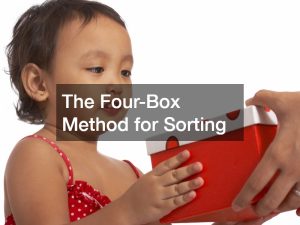The Ultimate Declutter Your Home Checklist: Simple Steps to a Tidy and Organized Space
Introduction:
Creating a clean and organized home is essential for a peaceful and productive living environment. Decluttering reduces stress and enhances productivity by making a space more functional and aesthetically pleasing. This checklist provides actionable, step-by-step guidance to achieving a clutter-free home, reducing chaos, and increasing clarity in your living spaces.
Step 1: Start with a Plan
“Assess Each Room and Set Realistic Goals”
Begin the decluttering journey by assessing each room and identifying which areas need the most attention. Prioritize based on the level of disarray and the impact on daily routines, starting with the most cluttered spaces. Establish a realistic timeline, like dedicating a weekend for an entire room or tackling one small area per day to avoid feeling overwhelmed.
Ensure you have a clear vision of what you want each room to look and feel like post-decluttering. Writing down specific goals for each area can help maintain focus and motivation throughout the process. Remember, decluttering is a strategy that requires time and, most importantly, a plan to see it through effectively.
This structured approach turns the daunting task of decluttering into manageable segments. With room-by-room decluttering strategies, organizing your home becomes a sustainable endeavor that aligns with your lifestyle. Incorporate this declutter-your-home checklist into your routine to maintain order continuously.
Step 2: Gather Decluttering Supplies
Essential Tools for Decluttering Success”
The right supplies are crucial for an efficient decluttering session. Gather boxes, trash bags, storage bins, labels, and cleaning supplies before beginning. These items will help you sort, categorize, and clean as you organize your home.
Labeling storage bins is essential for maintaining organization after decluttering. Clear labeling systems prevent items from becoming misplaced, helping you sustain a clutter-free environment. Storage solutions, such as baskets or drawer dividers, also aid in categorizing items for easier access and tidying.
Having these tools readily available means you can seamlessly transition between decluttering tasks without interruption. Properly equipped, you can tackle even the most daunting areas with a sense of control and preparedness. This foresight makes the decluttering process not only effective but also enduring.
Step 3: Declutter by Categories, Not by Location
“The Room-by-Room vs. Category Method Debate”
Decluttering by category allows for a holistic approach, providing a clearer sense of what items you have. Gather all like-items (such as clothing, books, or kitchenware) into one space to assess overall quantity and necessity. This method often reveals items that are duplicated or no longer needed, offering a streamlined process for reduction.
The category method enables you to identify excesses and address them systematically. This approach is central to many popular tidying philosophies, offering a profound insight into possessions and their purpose in your life. It empowers you to make decisive, meaningful choices about what to keep and what to discard.
By decluttering categorically, you will better grasp the volume of your belongings, allowing for more informed decisions. This method helps avoid the pitfall of simply shifting items from one room to another, which doesn’t solve the underlying clutter issue. Use this approach to make tangible progress in your decluttering journey.
Step 4: The Four-Box Method for Sorting

“Keep, Donate, Sell, and Trash – The Four Essential Categories”
Utilize the four-box method, dividing items into keep, donate, sell, and trash. This structured approach ensures every item has clarity in purpose post-decluttering. Items not used in the past year likely belong in the donate or sell boxes, liberating your space for meaningful belongings.
Deciding where each item fits encourages reflection on its value and necessity in your life. This method prompts a deeper connection to your possessions, fostering a more intentional living environment. Sorting through categories also streamlines the decluttering process, offering immediate visual progress.
Employing the four-box method equips you with a clear pathway to decluttering. By focusing on value and function, you create space for a more organized and serene home. This method removes the mental clutter often attached to possessions, offering a fresh start.
Step 5: Declutter Your Living Room and Common Spaces
“Simple Tips for Taming the Living Room Chaos”
Removing unnecessary decorative items and excess furniture crowding your living space. Simplifying entertainment centers and bookshelves will significantly reduce visual clutter and enhance functionality. Opt for multi-purpose furniture with built-in storage to effectively minimize and conceal clutter.
Common areas often accumulate various items that don’t belong, leading to an overwhelming and chaotic environment. Regularly reassess these spaces to ensure they remain clutter-free and welcoming. Systematic organization creates an inviting atmosphere, enhancing the comfort and usability of your home.
Adopting consistent habits in these spaces ensures they remain neat and organized long-term. Rotating seasonal decor or using modular furniture can also help refresh the look without inducing clutter. This disciplined approach maintains both aesthetic and practicality in your living areas.
Step 6: Tackle the Bedroom Closet

“Streamline Your Wardrobe and Maximize Closet Space”
Start by emptying your closet entirely and sorting clothes by season, type, and frequency of use. This clear distinction makes it easier to see which items are worn often and which need to be purged. Donate or sell pieces that no longer fit or reflect your personal style.
To maximize closet space, incorporate organizers like shelving units, hanging racks, and storage bins. These tools enhance accessibility and make the most of vertical storage potential. Utilize creative folding and hanging techniques to optimize space within the closet.
Streamlining your wardrobe through mindful selection fosters a clearer sense of personal style. This approach also reduces decision fatigue, often caused by an overcrowded closet. Embrace this process to create a functional and inspiring wardrobe space.
Step 7: Organize Your Kitchen Efficiently
“Clear the Counters and Organize Kitchen Storage”
An organized kitchen begins with emptying out cabinets, drawers, and the pantry to evaluate each item’s utility. Dispose of expired foods and give away duplicate or superfluous kitchen gadgets to reclaim necessary space. Thoroughly assess what remains to ensure it supports your cooking and dining needs.
Implement dividers, racks, and transparent containers to visually organize and access items effortlessly. This utility-focused organization within cabinets extends the efficiency of daily kitchen operations. Clear containers consolidate ingredients, making meal preparation an intuitive task.
Countertops should remain clear for ease of movement and food preparation. Designate specific zones for appliances and neatly store others out of sight when not in use. This method simplifies the kitchen environment, promoting enjoyable and efficient culinary experiences.
Step 8: Sort Through the Bathroom and Linen Closet
“Create a Clean, Functional Bathroom Space”
Start bathroom decluttering by eliminating expired toiletries, makeup, and medications. These often-overlooked items occupy valuable space and hinder a streamlined morning routine. Replacing these with essentials ensures a clutter-free area that serves your daily needs.
Use clear containers and drawer organizers for efficient storage and easy accessibility to everyday essentials. These tools prevent accumulation and overcrowding in bathroom spaces. Organized storage keeps items visible, reducing time spent searching for specific products.
Fold and arrange towels and linens in a neat, accessible manner. Vertical stacking or hanging options optimize space usage in the linen closet. This organized system ensures a tranquil and functional bathroom environment throughout your home.
Step 9: Conquer the Home Office or Workspace
“Eliminate Paper Clutter and Maximize Office Efficiency”
Begin office decluttering by categorizing and processing paperwork. Consider shredding or digitizing outdated or irrelevant documents, creating space for what truly matters. A paperless system not only saves space but enhances access to vital information.
Enhance efficiency by organizing office supplies and electronics with storage bins or desk organizers. Having designated areas for different tools and gadgets minimizes clutter and maximizes productivity. This organized approach supports focus and creativity in the workspace.
Create an effective filing system for necessary paperwork, ensuring it remains accessible yet unobtrusive. Regular maintenance of this system prevents accumulation and keeps the office neat. By implementing these strategies, your workspace becomes a hub of efficiency and order.
Step 10: Don’t Forget the Garage and Attic
“Transform Your Garage and Attic into Organized Spaces”
Garages and attics often become dumping grounds for unused or infrequently used items. Remove unnecessary belongings and consider installing shelving or racks to enhance organization. Specific storage zones for tools, seasonal decor, or sports equipment facilitate efficient space management.
Spring cleaning is an ideal time to evaluate these areas, deciding what truly belongs and what can go. Evaluate the function of each item, opting to donate or sell those unused for over a year. This periodic cleansing prevents these spaces from reverting into disorganized chaos.
Ensure these areas remain functional by regularly reassessing and reorganizing as needed. Splitting these initiatives into manageable tasks or incorporating family help can enhance efficiency. These efforts transform storage areas into accessible, purposeful parts of your home.
Step 11: Establish Decluttering Habits to Maintain Order
“Adopt Long-Term Strategies for Staying Organized”
Maintaining a clutter-free home requires commitment and routine. Establish daily and weekly schedules for tidying up, reinforcing the habits to support long-term benefits. Regular purging of unnecessary items ensures that clutter doesn’t sneak back in unexpectedly.
Involving the entire family in maintaining cleanliness distributes the workload and fosters a shared responsibility. Delegating tidying tasks encourages accountability, ensuring that every household member contributes. A clutter-free home becomes a collective commitment rather than a solitary endeavor.
This new habitual approach ensures that the home remains orderly and stress-free, aligning with your lifestyle. Consistent small efforts uphold the decluttering achievements and prevent regression. With this mindset, you embrace a lifestyle of simplicity and peace.
Step 12: Sustainability in Decluttering
“Eco-Friendly Ways to Dispose of Unwanted Items”
Sustainable decluttering not only clears your space but also benefits the environment. Recycling, repurposing, and responsible donating are key for a socially conscious approach to minimizing waste. Donating usable items to charities or community groups supports sustainability and aids others in need.
Opt for eco-friendly disposals by choosing recycling and donation when possible, reducing landfill contributions. This approach often finds new life in items, extending their usefulness beyond initial ownership. Repurposing items also presents creative opportunities, turning functional artifacts into cherished home pieces.
Sustainability emphasizes mindful consumption and resource reallocation. Conscious decluttering aligns with ecologically responsible living, ensuring your home maintains harmony with the environment. This balance supports a decluttered space and promotes a healthier planet.
Conclusion
Decluttering transforms a chaotic home into a clean, organized sanctuary that supports wellness and productivity. It’s not a one-time event but a continuous, rewarding practice that sustains long-term benefits. Using this declutter-your-home checklist ensures a manageable, systematic approach to transforming spaces, fostering a lifestyle of clarity and peace.
Remember, the journey to a clutter-free home is ongoing, integrating habits that maintain order and enhance your quality of life. Each step of decluttering supports a more peaceful physical and mental environment. As you progress, consider exploring related topics on home organization and storage tips to enrich your space further.
